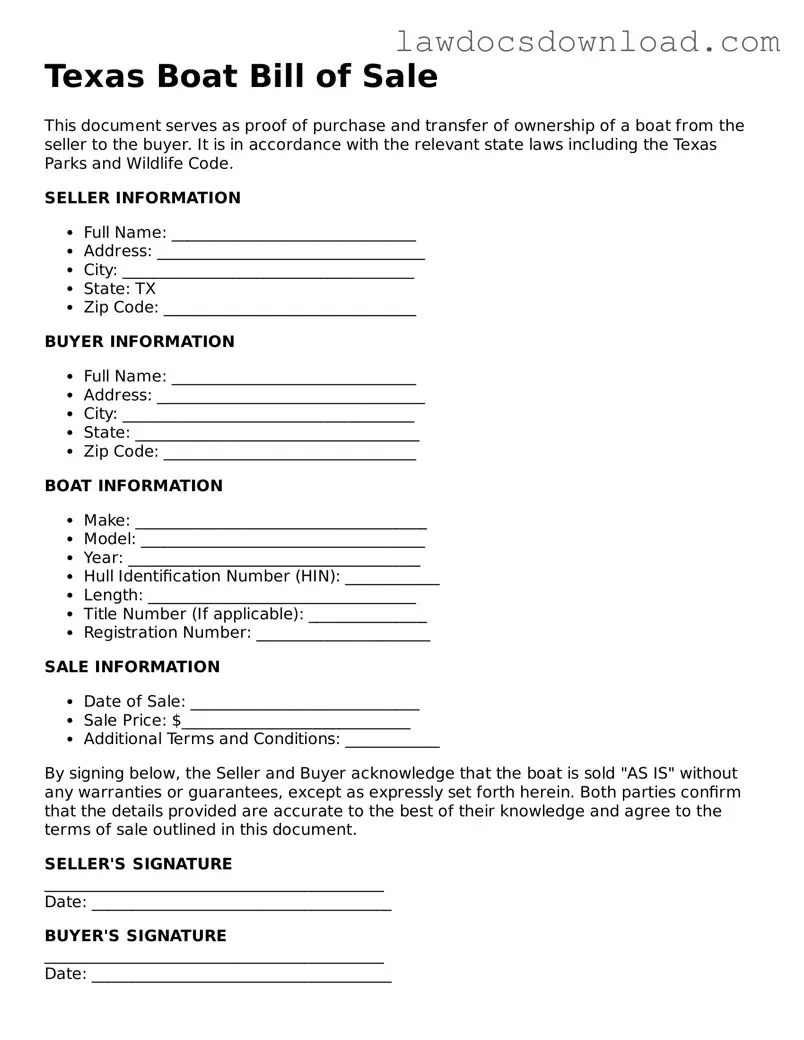The Texas Boat Bill of Sale is similar to the Vehicle Bill of Sale in that both serve as legal agreements documenting the sale and transfer of ownership from the seller to the buyer. In essence, they provide proof of purchase and change of ownership for boats and vehicles, respectively. Both documents are crucial for registration purposes and often include details such as the make, model, year, and identification number of the item being sold, as well as the names and signatures of both the buyer and seller.
Like the Texas Boat Bill of Sale, the General Bill of Sale is used to document the transfer of various types of personal property from one party to another. While the Boat Bill of Sale specifically focuses on boats, the General Bill of Sale can cover items ranging from furniture to electronics, demonstrating the versatility of such documents in recording the sale of personal property. Both forms typically include information about the item sold, the sale price, and the parties involved, ensuring a mutual agreement on the transaction's terms.
The Real Estate Bill of Sale is another document that shares similarities with the Texas Boat Bill of Sale, as both are instrumental in the transfer of ownership. However, the Real Estate Bill of Sale pertains to property transactions, documenting the sale of land or buildings. Despite differing in the types of property they cover, both documents function to legally record the details of the transaction, including the parties' identities, the sale price, and any other pertinent terms agreed upon by both the buyer and seller.
The Firearm Bill of Sale is akin to the Texas Boat Bill of Sale in its role as a legal document certifying the sale and transfer of ownership of a firearm from a seller to a buyer. Both documents serve to protect the rights of both parties involved and include specific information such as the make, model, and serial number of the firearm or boat, alongside the sale price and personal details of the buyer and seller. This detailed documentation helps ensure the legality of the transfer and serves as a record for future reference.
Similarly, the Livestock Bill of Sale parallels the Texas Boat Bill of Sale by providing a legal framework for the sale and transfer of animals, such as cattle or horses, from one party to another. Both documents are essential for registering the change of ownership and include detailed information about the item (or animal) being sold, the agreed-upon price, and the identities of the buyer and seller. These bills of sale are vital for maintaining accurate records of ownership and transaction details.
Lastly, the Aircraft Bill of Sale shares a common purpose with the Texas Boat Bill of Sale, as both are used to document the sale and transfer of ownership of a high-value asset. Whether it's a plane or a boat, these documents contain critical information, including the make, model, serial number or hull identification number, and the details of the parties involved. They play a key role in the official registration process of the asset under the new owner's name, ensuring legal compliance and protecting the interests of all parties involved.
